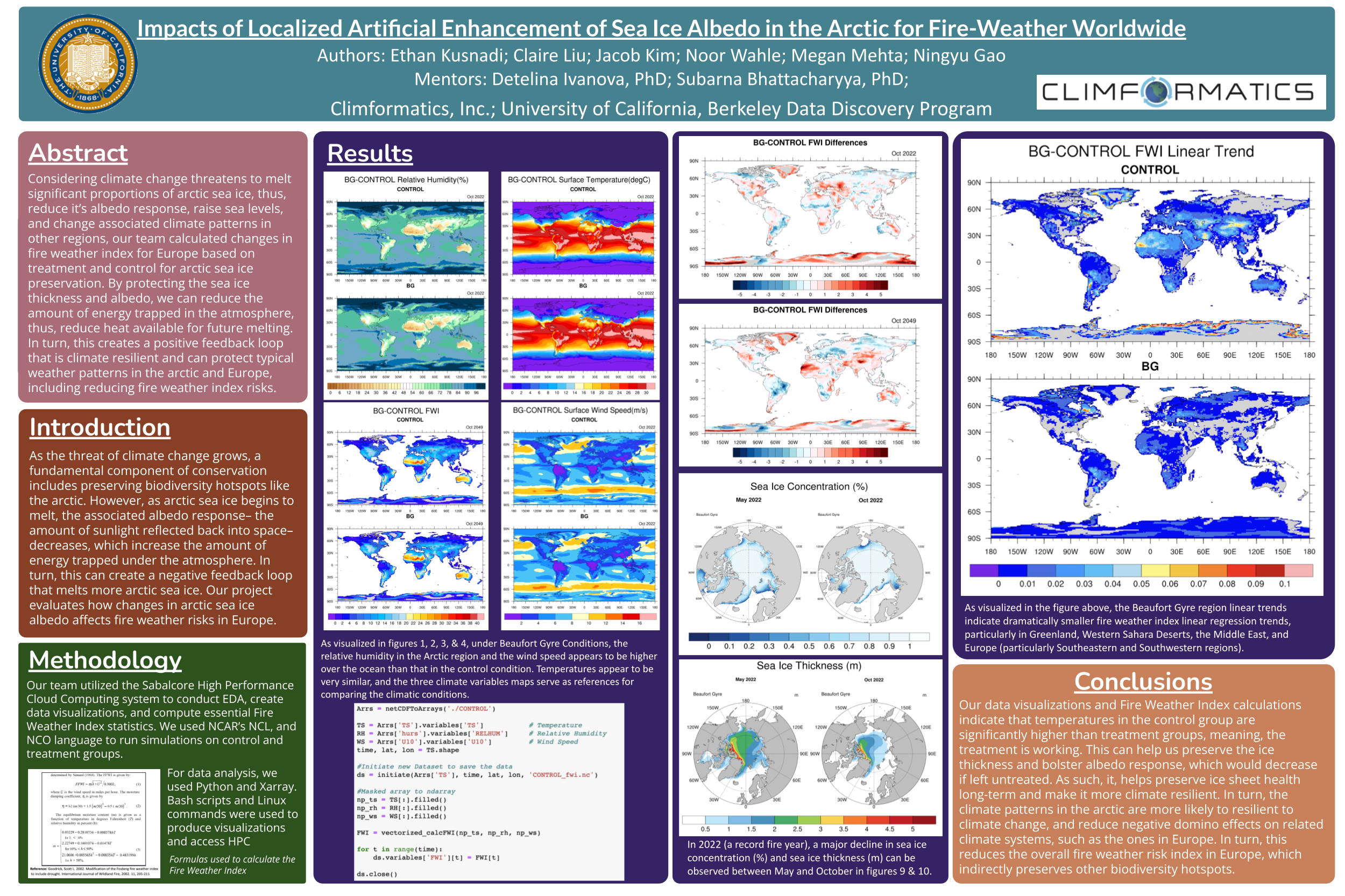My name is Detelina Ivanova and I am a co-founder and Chief Technology Officer at Climformatics. We are a women-owned company based in California. With my co-founder and CEO Dr. Subarna Bachattaryaa we are former LLNL employees with expertise in climate modeling, climate data science and climate risk assessment. At Climformatics we are building a predictive tool that enables a new level of accuracy in 'near-to-long term' climate forecasting. Our mission is to Predict, Prepare and Protect businesses from catastrophe climate change risks. Our solution will help businesses to prepare and mitigate successfully for future climate disasters, preventing and reducing losses and has potential to increase their sustainability and profitability in a long term. We are passionate about climate restoration and part of our work is focused on vetting new climate restoration technologies which can reduce the harmful impacts of the warming climate.
The loss of the Arctic polar ice cap has been related to worldwide climate changes ranging from destabilized polar jets, intensified storm tracks, extreme weather and extended drought events. The recent 2022 extreme heatwaves and record fires in Europe might be closely connected to the warming Arctic. The continuous decline of the multi-year ice pack show that the emerging Arctic may be beyond the point of recovery by only reducing the GHG emissions and urges for additional mitigation measures. New technology has been proposed to restore the Arctic sea ice by artificially enhancing the surface sea ice albedo using reflective hollow glass micro-spheres (HGMs) with low environmental impact (Field et al, 2018). Ongoing climate modeling studies of localized application of this technology are carried out in strategic regions such as the Fram strait (Ivanova et al, 2020), the largest gateway of Arctic sea ice export, and the Beaufort Gyre (Ivanova et al, 2021), the largest dynamic feature in the Arctic circulation system. Here we evaluate how the application of such technology in these Arctic regions may impact the climate worldwide and assess its efficiency in mitigating the observed trends of extreme high-temperatures and fire-weather observed in US, Europe and Australia.

